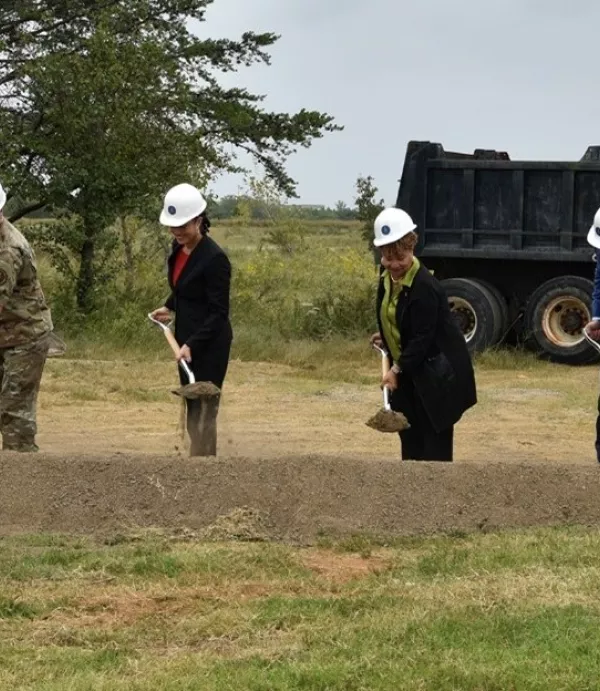The Boro Team Collaborates with Emergency Response Volunteers on Training Session
April 1, 2019

Jack Prudence is an accounting manager in Clark’s Finance Department by day, and a member of the Vienna, Virginia Volunteer Fire Department by night. It’s not often that these two worlds intersect, but this fall, they did just that in order to foster a shared understanding of emergency response considerations among volunteer responders and Clark’s project management personnel. To prepare his fellow volunteer emergency medical technicians (EMTs) and firefighters to best address an emergency on a construction site, Prudence organized a training session at The Boro, Clark’s 1.7-million-square foot mixed-use project under construction in Tysons, Virginia. This training for volunteers was part of The Boro’s ongoing collaboration with local emergency services agencies.
Volunteer fire departments often provide backup to other jurisdictions, so representatives from nearby McLean, Greater Springfield, and Franconia Volunteer Fire Departments accompanied firefighters from Vienna on the site tour. Attendees observed multiple phases of construction on the project’s five-story office tower and three residential towers, which range in size from 13 to 32 stories. The tour also included a visit to the ninth floor outdoor amenity space linking the residential towers to the new street constructed through the site. “Many volunteer responders have never set foot on a construction project before and it’s important for them to understand the conditions they might encounter on a call,” Prudence remarked. “I’m happy to help bridge the gap.”
Kyle Leas, the safety manager at The Boro who conducted the tour, agreed. “It’s critical for emergency personnel to be familiar with the unique aspects of a construction project, like how to access the site and means of egress,” he explained. “This job has four different building addresses, so grasping the layout of the project is important for response time. We discussed the quickest routes into the buildings, and where we can accommodate their vehicles,” Leas continued. In return, firefighters shared insights on the proper storage of chemicals and flammable materials with the project team. Leas was grateful for their feedback, commenting, “it was helpful to hear their suggestions on fire prevention because they see the site from a different perspective.”
The tour also covered details such as the location of the job’s sprinkler standpipe, the details of Clark’s Emergency Action Plan, and a discussion of how to best transport an injured person from one of the top floors of the residential towers. “Can a stretcher fit in the construction hoist? Would a stokes basket need to be attached to a crane? It’s important for us to consider these logistics,” Prudence explained. “The more familiar we are in advance with conditions we may encounter, the better we can respond.”


